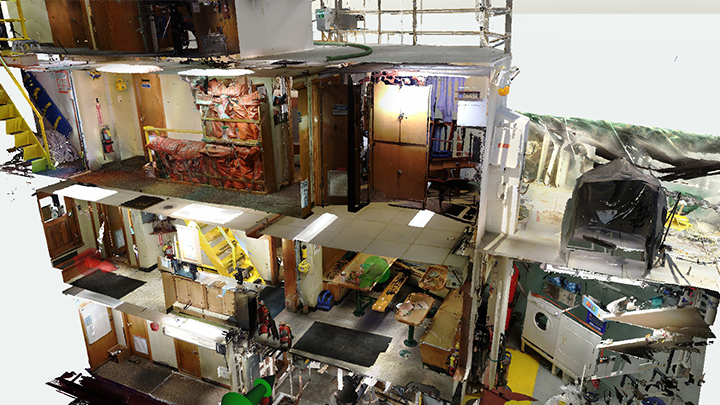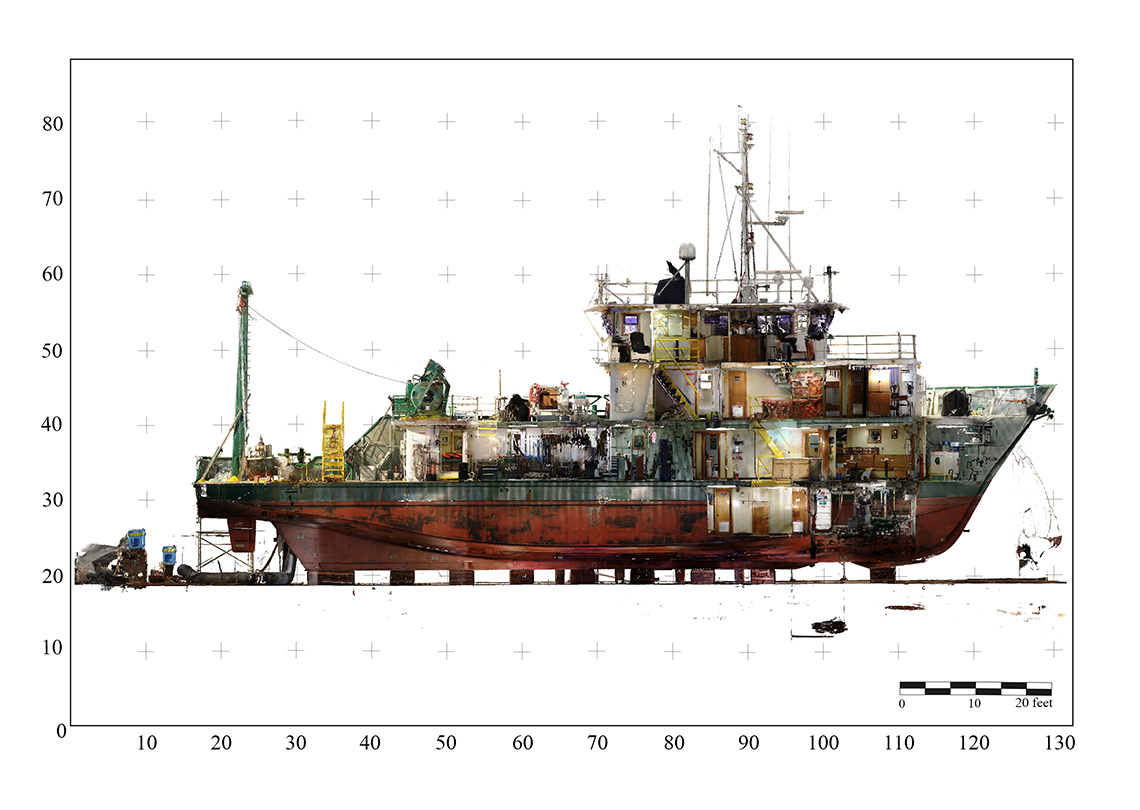Lab Projects
R/V Weatherbird II Lidar Scan
In 2021, an interdisciplinary team from the University of South Florida’s (USF) Access 3D Lab (Laura Harrison, Director and Steven Fernandez, Research Assistant Professor in the School of Public Affairs) carried out a terrestrial lidar survey of the R/V Weatherbird II while it was in dry dock at the Port of Tampa. The (R/V) Weatherbird II is the largest research vessel of the Florida Institute of Oceanography fleet. The 115-foot, 194-ton vessel has Berthing for a Crew of 7 and a Science Party of 13 and can accommodate more for educational day cruises. With 780 square feet of working deck space and 200 square foot of wet laboratory space, the vessel is capable of voyaging throughout the Gulf of Mexico, Caribbean, and parts of the Atlantic. Terrestrial lidar scans of boats are rare, because the scanners must be completely stationary to capture accurate dimensional data of fixed surfaces.

3D Scanning
The terrestrial lidar scans of the R/V Weatherbird II provide comprehensive documentation of the vessel’s advanced laboratories, oceanographic devices and sensor technology. The vessel was fully documented using three terrestrial laser scanners that capture up to 976,000 points per second, with a range of 0.6m to 150m (S150) or 330m (X330). The scanners are equipped with a built-in camera with 70-megapixel resolution, GPS, a compass, an altimeter, and a tilt sensor. The result of the scan is a 3D point cloud dataset with maximum distance accuracy of +/-2mm. These technologies enable scientists and students to study and learn about various aspects of the ocean’s biological, chemical, geological and physical characteristics. Over time, the 3D digital dataset will offer researchers and vessel personnel an opportunity to make observations, measurements and CAD drawings of the vessel and its components that can be used to assist in maintenance and the fabrication of new parts. The 3D scan below allows researchers to see precisely where the satellite receivers are located in reference to the high resolution imaging transducers.

Overview map with 2mm accuracy generated by Faro Focus scanner.
The R/V Weatherbird II
The 3D point cloud model of the R/V Weatherbird II provides an important survey-grade digital record of the ship’s physical structure, and opens the door for community outreach, STEM education, and community engagement centered on oceanography in Florida. The Research Vessel (R/V) Weatherbird II is a seagoing platform for oceanographic and marine science education and research at sea that is homeported on Bayboro Harbor at the University of South Florida (USF) College of Marine Science, St. Petersburg Campus.

Researchers use the vessel to support advanced studies on a myriad of complex issues impacting global and coastal oceans, as well as life in the sea. The range of research projects supported by the R/V Weatherbird II is broad. It includes coastal ocean monitoring with fixed platforms, moored buoys, and discrete sampling; red tide detection, monitoring, and population dynamics; fisheries resource assessment; optical oceanography related to remote sensing capabilities; coral reef research; and continental shelf mapping to name a few recent programs supported.

Side-vew orthophoto of the R/V Weatherbird II.